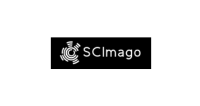In vitro anthelmintic activity of Polygonum acre (Linnaeus, 1754) extracts against the ruminant nematode Haemonchus contortus (Rudolphi, 1803)
DOI:
https://doi.org/10.5380/avs.v27i3.83890Palavras-chave:
egg hatch test, flavonoids, Haemonchus contortus, water pepper.Resumo
The genus Polygonum exhibits a variety of biological and therapeutic properties. The goal of this study was to determine the in vitro anthelmintic activity of Polygonum acre extracts against the nematode Haemonchus contortus, characterizing the phenolic profile of these extracts. Aerial parts of P. acre were subjected to hot aqueous and hydroethanolic extractions obtaining EHW-PA (aqueous) and ETOH-P, (hydroethanolic), respectively. The phenolic content of the extracts was analyzed by using high-performance liquid chromatography with electrospray ionization tandem mass spectrometry (HPLC-ESI-MS/MS) and colorimetric assays. The egg hatch test (EHT) and larval migration test (LMT) were used for anthelmintic activity assays. For comparison, chlorogenic acid and rutin were selected for the EHT. The HPLC-ESI-MS/MS analysis revealed the presence of isoquercitrin, myricitrin, quercetin, rosmarinic acid, rutin, and taxifolin in both extracts. EHW-PA and ETOH-PA showed an egg hatch inhibitory effect. EHW-PA had an IC50 of 442.24 µg/mL on the EHT, which was statistically lower (P ≤ 0.05) than ETOH-PA (IC50 = 703.60 µg/mL). Chlorogenic acid had an IC50 of 8.66 µg/mL. Rutin presented no effect over parasite eggs. EHW-PA and ETOH-PA did not show any larvicidal effect. Even though, there is a need of new tests, this study has determined the possibility to develop biofriendly compounds based on Polygonum spp. constituents against H. contortus.
Downloads
Publicado
Como Citar
Edição
Seção
Licença
Autores que publicam nesta revista concordam com os seguintes termos:
- Autores mantém os direitos autorais e concedem à revista o direito de primeira publicação, com o trabalho simultaneamente licenciado sob a Creative Commons - Atribuição 4.0 Internacional que permite o compartilhamento do trabalho com reconhecimento da autoria e publicação inicial nesta revista.
- Autores têm autorização para assumir contratos adicionais separadamente, para distribuição não-exclusiva da versão do trabalho publicada nesta revista (ex.: publicar em repositório institucional ou como capítulo de livro), com reconhecimento de autoria e publicação inicial nesta revista.
- Autores têm permissão e são estimulados a publicar e distribuir seu trabalho online (ex.: em repositórios institucionais ou na sua página pessoal) a qualquer ponto antes ou durante o processo editorial, já que isso pode gerar alterações produtivas, bem como aumentar o impacto e a citação do trabalho publicado.














